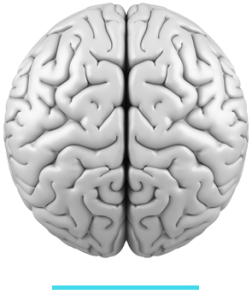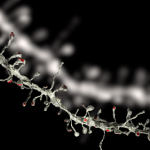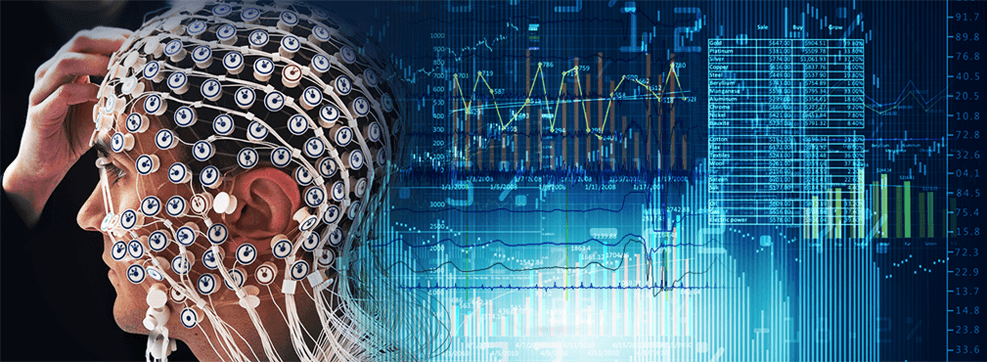NEUROINDUCTIVE PRACTICE®
Created in 2008 by Victor Lugli, entrepreneur and winner of the international “Excellence in Contribution to the Science” award, jointly by the neuroscience societies ECNS – Electroencephalography and Clinical Neuroscience Society, ISNIP – International Society for Neuroimaging in Psychiatry and ISBET – International Society for Brain Electromagnetic Topography, NeuroInductive Practice® is the most modern paradigm of advanced influence and persuasion skills for application in business.
Developed to create competitive advantage to the companies of the Lugli Group, from 2010 on, NeuroInductive Practice® is exclusively disclosed by Lugli Corporate Training through international training programs in Sales, Negotiation, Influence and Leadership for C-level executives. From 2012 on, the entire training structure based on NeuroInductive Practice® is extended to the entire corporate organizational chart, to the benefit of large-sized companies from the most wide-ranging operation segment.
NEUROINDUCTIVE PRACTICE®
Created in 2008 by Victor Lugli, entrepreneur and winner of the international “Excellence in Contribution to the Science” award, jointly by the neuroscience societies ECNS – Electroencephalography and Clinical Neuroscience Society, ISNIP – International Society for Neuroimaging in Psychiatry and ISBET – International Society for Brain Electromagnetic Topography, NeuroInductive Practice® is the most modern paradigm of advanced influence and persuasion skills for application in business.
Developed to create competitive advantage to the companies of the Lugli Group, from 2010 on, NeuroInductive Practice® is exclusively disclosed by Lugli Corporate Training through international training programs in Sales, Negotiation, Influence and Leadership for C-level executives. From 2012 on, the entire training structure based on NeuroInductive Practice® is extended to the entire corporate organizational chart, to the benefit of large-sized companies from the most wide-ranging operation segment.




Conceptually, NeuroInductive Practice® is a multi-disciplinary program that incorporates the most modern discoveries of Cognitive Neuroscience and of Behavioral Economics, with the purpose of breaking down the set of causal factors which govern the individual’s decision-making process as well as their integration with cognitive mechanisms which originate gratification and reward.
Investigating the neural correlates of superior cognitive functions involved in illusory perception: an fMRI study.
LUGLI, BRANCUCCI – 2010

.
From the Cognitive Neuroscience’s basic elements, NeuroInductive Practice® counts with an imposing amount of scientific research which covers the most surprising faculties of the human mind, from properties which emerge from the interaction of functional mechanisms present in all levels of neural hierarchy in a dynamic balance which also involves the most basic dimensions of the nervous system. Among the evidence which constitutes the NeuroInductive Practice® , the results of the exclusive scientific researches of Victor Lugli, of the companies of the Lugli Group and their teams, assume an exclusive relevance, within the scope of the investigation on the neural correlates of consciousness (NCC), and of the analysis of the hedonistic and the reward components consequent to perception as well as its integrated applications in NeuroMarketing, through high technology protocols which involve fMRI (functional magnetic resonance imaging), tDCS and tACS (Transcranial Direct and Alternate Current Stimulation), TMS (Transcranial magnetic stimulation), EEG (electroencephalography) and MEG (magnetoencephalography).

From the Behavioral Economics’ basic elements, NeuroInductive Practice® incorporates a series of revolutionary studies that establish the definitive connection between psychology and economics, uncovering the complexities of the human characteristics which systematically influence the individual decisions and the success of the market. Among the most inspiring evidence that constitutes the NeuroInductive Practice® , the ideas that won the Nobel Prize® in Economics in 2001, 2002 and 2017 assume an exceptional prominence. In particular, the skills implemented by NeuroInductive Practice® are corroborated by the set of dynamics related to the Architecture of Choice (Nudging), which accurately explains the relation between the way a choice is presented and the definition for it to be adopted; by the effects of Asymmetry of Information between competing parties of the market and its consequences related to risk perception; and, finally, by the Risk Aversion, which defines the dynamics of the human judgment within the context of decision making under conditions of uncertainty, establishing the implications of the individuals being significantly more motivated to avoid losses than to acquire equal gains.





Conceptually, NeuroInductive Practice® is a multi-disciplinary program that incorporates the most modern discoveries of Cognitive Neuroscience and of Behavioral Economics, with the purpose of breaking down the set of causal factors which govern the individual’s decision-making process as well as their integration with cognitive mechanisms which originate gratification and reward.
Investigating the neural correlates of superior cognitive functions involved in illusory perception:
an fMRI study.
LUGLI, BRANCUCCI – 2010

From the Cognitive Neuroscience’s basic elements, NeuroInductive Practice® counts with an imposing amount of scientific research which covers the most surprising faculties of the human mind, from properties which emerge from the interaction of functional mechanisms present in all levels of neural hierarchy in a dynamic balance which also involves the most basic dimensions of the nervous system. Among the evidence which constitutes the NeuroInductive Practice® , the results of the exclusive scientific researches of Victor Lugli, of the companies of the Lugli Group and their teams, assume an exclusive relevance, within the scope of the investigation on the neural correlates of consciousness (NCC), and of the analysis of the hedonistic and the reward components consequent to perception as well as its integrated applications in NeuroMarketing, through high technology protocols which involve fMRI (functional magnetic resonance imaging), tDCS and tACS (Transcranial Direct and Alternate Current Stimulation), TMS (Transcranial magnetic stimulation), EEG (electroencephalography) and MEG (magnetoencephalography).

From the Behavioral Economics’ basic elements, NeuroInductive Practice® incorporates a series of revolutionary studies that establish the definitive connection between psychology and economics, uncovering the complexities of the human characteristics which systematically influence the individual decisions and the success of the market. Among the most inspiring evidence that constitutes the NeuroInductive Practice® , the ideas that won the Nobel Prize® in Economics in 2001, 2002 and 2017 assume an exceptional prominence. In particular, the skills implemented by NeuroInductive Practice® are corroborated by the set of dynamics related to the Architecture of Choice (nudging), which accurately explains the relation between the way a choice is presented and the definition for it to be adopted; by the effects of Asymmetry of Information between competing parties of the market and its consequences related to risk perception; and, finally, by the Risk Aversion, which defines the dynamics of the human judgment within the context of decision making under conditions of uncertainty, establishing the implications of the individuals being significantly more motivated to avoid losses than to acquire equal gains.





Conceptually, NeuroInductive Practice® is a multi-disciplinary program that incorporates the most modern discoveries of Cognitive Neuroscience and of Behavioral Economics, with the purpose of breaking down the set of causal factors which govern the individual’s decision-making process as well as their integration with cognitive mechanisms which originate gratification and reward.
Investigating the neural correlates of superior cognitive functions involved in illusory perception: an fMRI study.
LUGLI, BRANCUCCI – 2010


From the Cognitive Neuroscience’s basic elements, NeuroInductive Practice® counts with an imposing amount of scientific research which covers the most surprising faculties of the human mind, from properties which emerge from the interaction of functional mechanisms present in all levels of neural hierarchy in a dynamic balance which also involves the most basic dimensions of the nervous system. Among the evidence which constitutes the NeuroInductive Practice® , the results of the exclusive scientific researches of Victor Lugli, of the companies of the Lugli Group and their teams, assume an exclusive relevance, within the scope of the investigation on the neural correlates of consciousness (NCC), and of the analysis of the hedonistic and the reward components consequent to perception as well as its integrated applications in NeuroMarketing, through high technology protocols which involve fMRI (functional magnetic resonance imaging), tDCS and tACS (Transcranial Direct and Alternate Current Stimulation), TMS (Transcranial magnetic stimulation), EEG (electroencephalography) and MEG (magnetoencephalography).

From the Behavioral Economics’ basic elements, NeuroInductive Practice® incorporates a series of revolutionary studies that establish the definitive connection between psychology and economics, uncovering the complexities of the human characteristics which systematically influence the individual decisions and the success of the market. Among the most inspiring evidence that constitutes the NeuroInductive Practice® , the ideas that won the Nobel Prize® in Economics in 2001, 2002 and 2017 assume an exceptional prominence. In particular, the skills implemented by NeuroInductive Practice® are corroborated by the set of dynamics related to the Architecture of Choice (Nudging), which accurately explains the relation between the way a choice is presented and the definition for it to be adopted; by the effects of Asymmetry of Information between competing parties of the market and its consequences related to risk perception; and, finally, by the Risk Aversion, which defines the dynamics of the human judgment within the context of decision making under conditions of uncertainty, establishing the implications of the individuals being significantly more motivated to avoid losses than to acquire equal gains.

FOR MORE INFORMATION
Contact us and one of our consultants will promptly reply to you
FOR MORE INFORMATION
Contact us and one of our consultants
will promptly reply to you
FOR MORE INFORMATION
Contact us and one of our consultants will promptly reply to you.






